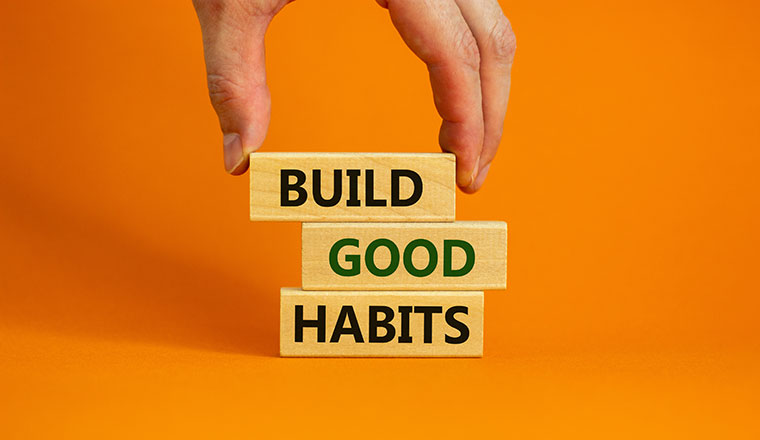
The Power of Habit: Building a Productive Daily Routine
October 25, 2023
Creating a productive daily routine is like setting the stage for a successful and fulfilling life. The habits you cultivate in your day-to-day life have a profound impact on your personal and professional growth. In this article, we’ll explore the power of habit and provide insights on how to build a productive daily routine that can help you achieve your goals and lead a more balanced, efficient life.
Understanding the Power of Habit
Habits are automatic behaviors that have been shaped by repetition. They allow us to perform complex tasks with little conscious thought. Understanding how habits work can help you harness their power to create a productive daily routine.
1. Cue: A habit begins with a cue or trigger. It’s the moment that prompts your brain to enter “autopilot” mode and initiate the habit. For example, feeling stressed (cue) might trigger the habit of reaching for a snack.
2. Routine: The routine is the actual behavior or action that follows the cue. In the example above, the routine is eating a snack.
3. Reward: Every habit is reinforced by a reward. In our example, the reward could be the temporary relief from stress that comes with eating the snack.
4. Craving: Over time, your brain starts to associate the cue with the anticipated reward, creating a craving. This craving is what keeps you coming back to the habit.
Building a Productive Daily Routine
Now that we understand the mechanics of habits, let’s explore how to use this knowledge to build a productive daily routine.
1. Identify Your Goals and Priorities
The first step in building a productive daily routine is to identify your goals and priorities. What do you want to achieve in your personal and professional life? Knowing your objectives will help you structure your routine around them.
2. Start Small
Don’t try to overhaul your entire routine all at once. Start with one or two habits you want to incorporate into your day. Small, manageable changes are more likely to stick and lead to lasting improvement.
3. Create a Cue
Choose a specific cue that will trigger your new habit. For example, if you want to establish a daily exercise routine, use the cue of putting on your workout clothes or setting an alarm to remind you to exercise.
4. Establish a Routine
Design a routine that aligns with your goals. If you want to read more, schedule time for reading in your daily routine. Be consistent in performing your chosen routine to reinforce the habit.
5. Implement a Reward
Associate a positive reward with your new habit. It could be the sense of accomplishment, the satisfaction of completing a task, or even a small treat. The reward should be meaningful to you.
6. Monitor Progress
Track your progress to stay accountable. Use a journal, a habit-tracking app, or a simple calendar to mark off the days you successfully maintain your new habit.
7. Be Patient and Persistent
Habit formation takes time. On average, it can take anywhere from 18 to 254 days for a new habit to become automatic. Be patient with yourself and remain persistent, even if you experience setbacks.
8. Stack Habits
Consider stacking new habits on top of existing ones. This means attaching a new habit to an established one. For example, if you already have a morning routine, you can add a new habit like stretching or meditation to it.
Sample Productive Daily Routine
Let’s create a sample productive daily routine based on common goals and priorities. You can adapt this example to fit your specific needs:
Morning:
- Wake Up Early: Start the day with a morning routine. Wake up at a consistent time to establish a reliable schedule.
- Exercise: Incorporate physical activity into your morning routine, whether it’s a quick workout, yoga, or a brisk walk.
- Healthy Breakfast: Eat a nutritious breakfast to fuel your body and mind for the day ahead.
Mid-Morning:
- Work Time: Dedicate this block of time to focused work. Tackle your most important tasks when your energy is at its peak.
Lunchtime:
- Healthy Lunch: Enjoy a balanced and nourishing lunch to recharge and refuel.
Afternoon:
- Focused Work or Creative Time: Use the afternoon for tasks that require creativity or deep concentration.
Evening:
- Review Your Day: Take a few minutes to review what you’ve accomplished and prepare a to-do list for the next day.
- Dinner: Have a well-balanced dinner and take time to unwind.
Night:
- Unwind: Spend your evening relaxing and doing activities that help you wind down, such as reading, taking a bath, or practicing mindfulness.
- Reflect: Before bed, reflect on your day, express gratitude, and set intentions for the following day.
The Importance of Flexibility
While structure is important in a daily routine, it’s equally vital to remain flexible. Life is filled with unexpected events, and being too rigid in your routine can lead to frustration. Allow room for spontaneity and adjustments while maintaining your core habits.
Review and Adjust
Periodically review your daily routine to ensure it aligns with your current goals and priorities. As circumstances and objectives change, your routine should adapt accordingly. Don’t be afraid to make adjustments to better serve your needs.
Incorporating breaks, relaxation, and leisure time is essential for a balanced daily routine. Remember that a productive routine should enhance your overall well-being, not lead to burnout. Customizing your daily routine to fit your goals and lifestyle will help you lead a more fulfilling and productive life.
